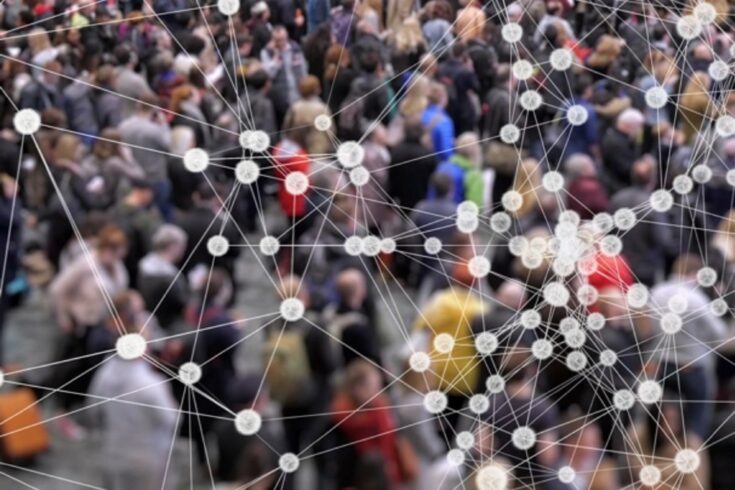Understanding how coronavirus spreads is essential to containing it.
UK Research and Innovation (UKRI) supports research that tracks infections through the UK’s population and creates a genetic family tree to identify where infections originated.
Our researchers are creating and improving computer models that simulate this spread to:
- help protect the vulnerable
- understand what impact different restrictions have on infection rates.
Find out how epidemiology helps us understand the spread of COVID-19.
UCL 25,000-person virus watch
UKRI-funded researchers at University College London are carrying out Virus Watch, which is a project that is studying 25,000 people across the country for COVID-19.
Within the group, 10,000 people are being tested for SARS-CoV-2 and other circulating viruses every time they report symptoms that could be caused by COVID-19.
The study has published regular findings. In June 2021, it reported that over a third of people who had COVID-19 believed they caught it in their own home. Just over 20% believed they caught COVID-19 in the workplace.
Decoding COVID-19’s genome
The Medical Research Council, in partnership with the Department of Health and Social Care and the Wellcome Trust, is backing the UK’s leading clinicians and scientists to map how COVID-19 spreads and behaves by using whole genome sequencing.
Through a £20 million investment, the consortium is finding insights that help the UK respond to this and future pandemics.
The COVID-19 Genomics UK Consortium (COG-UK) comprises:
- the NHS
- public health agencies
- the Wellcome Sanger Institute
- numerous academic institutions.
It is delivering large-scale, rapid sequencing of the virus and sharing intelligence with hospitals, regional NHS centres and the government.
By looking at the whole virus genome in people who have had confirmed cases of COVID-19, scientists can monitor changes in the virus at a national scale.
This helps us to understand:
- how the virus is spreading
- whether different strains are emerging
- whether changes in the virus affect the severity of disease.
COG-UK has now initiated the handover of routine sequencing to a national sequencing service run by the four UK public health authorities to provide a sustainable, long-term framework.
Using maths to combat the coronavirus
With support from the Engineering and Physical Sciences Research Council (EPSRC), mathematicians from the University of Manchester used their computer modelling expertise to advise the government on how to best protect the UK population during the coronavirus emergency.
To better predict the future, they are looking back to historic pandemics like the bubonic plague for clues on infection patterns.
With a focus on the risk to communities in enclosed places like prisons and cruise ships, their work has informed the scientific and technical advice to COBRA, the government’s national emergency team.
COBRA used this to make decisions such as when to order school closures, and on advice to the public about staying in isolation.
How the virus spreads in public spaces
The COVAIR study is exploring whether tiny airborne droplets and particles can spread a coronavirus in settings such as:
- supermarkets
- schools
- busy streets.
Researchers from Imperial College London and the University of Surrey have been funded by the EPSRC to find out whether microscopic droplets suspended in the air from coughing or talking can spread ‘live’ COVID-19 virus.
Research suggests that the smallest of these droplets can remain suspended in the air for hours. They also travel more than a few metres to land on surfaces, where they can persist for days.
A new method
Several projects have used polymerase chain reaction to detect the presence of the virus in the air. However, that method cannot show whether the virus is still viable and able to cause infection.
The COVAIR researchers are transferring samples to a high containment laboratory to find out whether they can replicate viable virus. This is an indicator that it could cause infection in the lungs of the person inhaling the aerosol or particles.
Protective measures
Professor Fan Chung, Principal Investigator at Imperial College London, said:
COVAIR will look into whether the live virus can be transmitted through aerosols or pollutant particles in the air. It will build on the expertise we have developed in our current INHALE study at Imperial, which aims to assess the impact of air pollution on personal health in urban environments.
If we’re able to detect viable virus in the air it may have implications for additional protective measures that people would need to take in public spaces.
Professor Chung added:
COVID-19 continues to have a major impact on the lives of everyone on the planet. It is therefore important to learn more about how we can protect ourselves from this deadly virus.
Last updated: 15 October 2021

